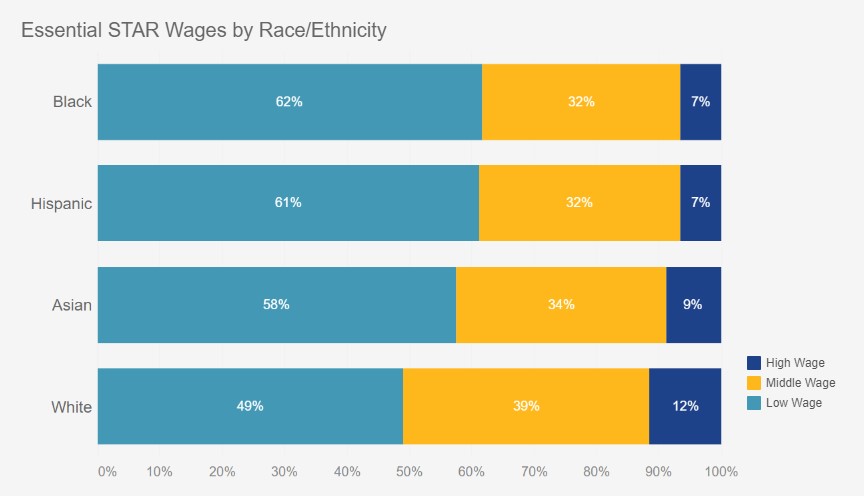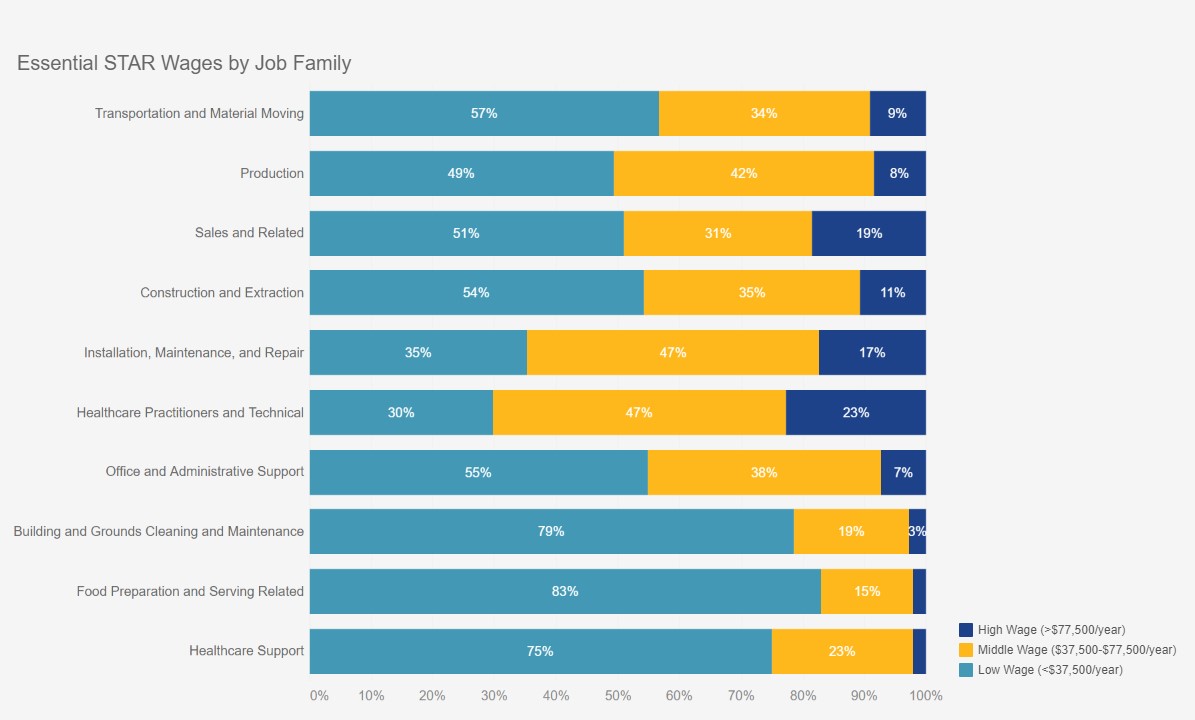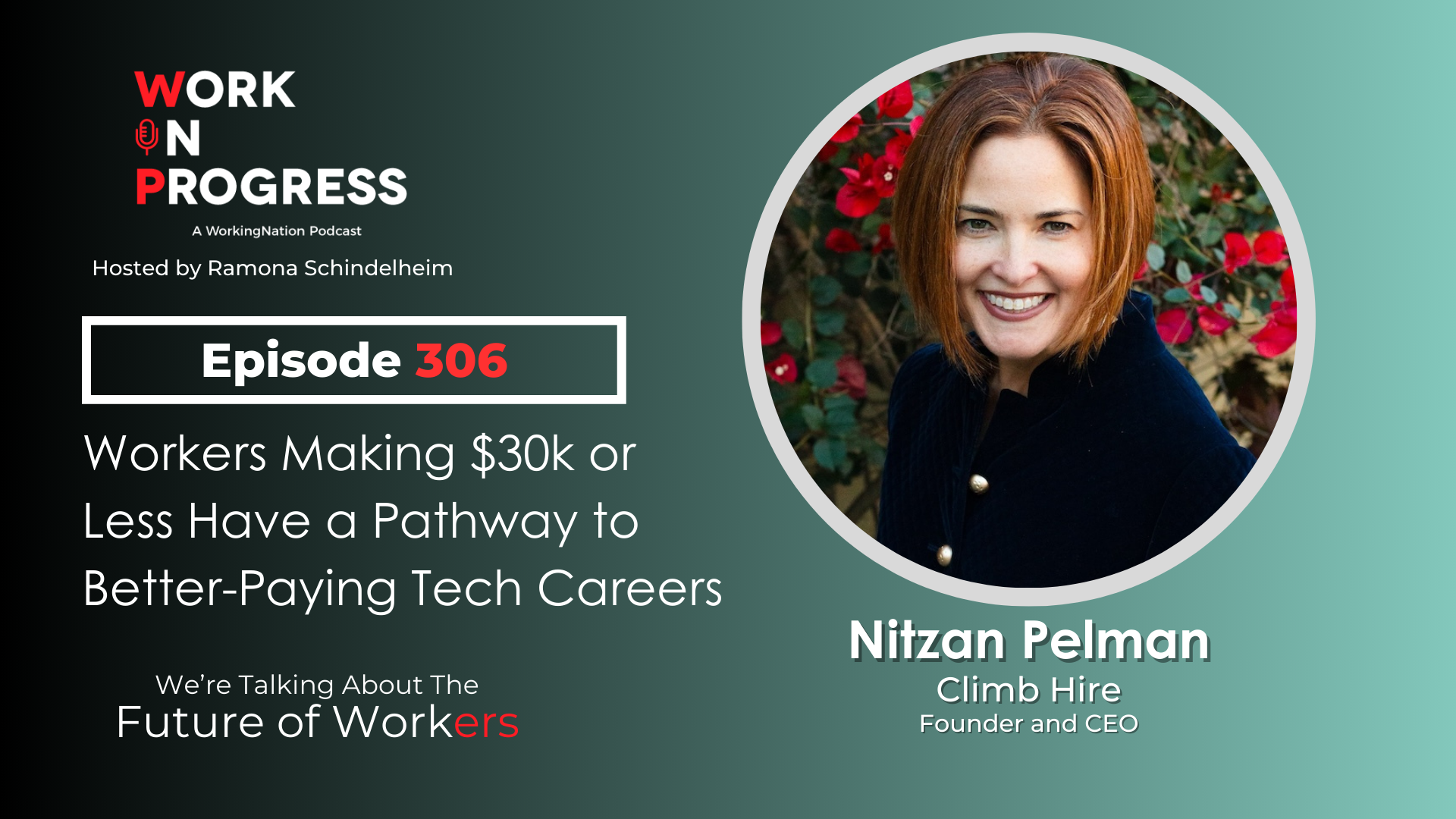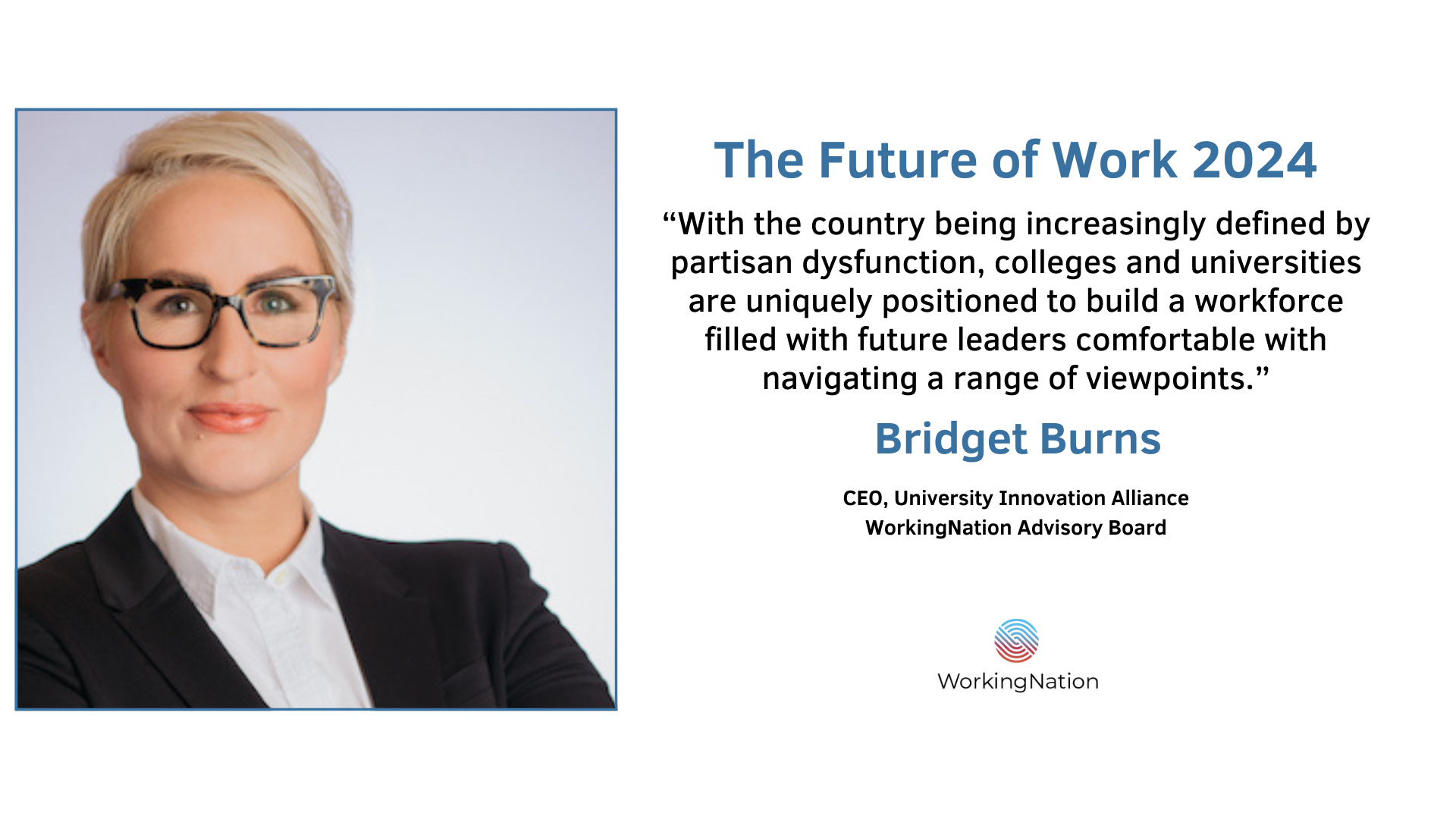Who are the vast majority of essential workers who have been front and center during the pandemic?
More than half of the nation’s 142 million active workforce are people without four-year college degrees. Those 71 million workers are Skilled Through Alternative Routes (STARs). They have been active in the labor force in the past two years, over the age of 25, without a college degree, but do have a high school diploma. With the onset of COVID-19, 42 million STARs are working in “essential” jobs.

This finding comes from Opportunity@Work whose mission is to “rewire the U.S. labor market so that all STARs can work, earn, and learn to their full potential.”
STARs have gained skills through a variety of paths including on-the-job learning, community college, apprenticeships, training programs, and military service.
Who are the STARs of Our Economy?
A new Opportunity@Work data story Shining a Light on STARs: the Essential Workers of Covid-19 indicates most essential jobs fall into seven “job families”:
- Transportation and material moving
- Production
- Sales and related
- Construction and extraction
- Installation, maintenance, and repair
- Health care practitioners and technical
- Office and administrative support
Papia Debroy, Ph.D. is vice president of insights at Opportunity@Work. She says there is wage variation among the job categories. But she notes, “I think the majority of job families where there’s a high volume of essential workers, more than 50 percent of the jobs pay what we define to be low wages, which is less than $37,500 a year.”
Additionally, more than 60 percent of Black and Hispanic STARs are earning low wages. This is in comparison to 49 percent of white STARs working in low wage jobs. The findings indicate, “These wage disparities signal barriers to mobility.”

According to the data, there is also a major STARs gender gap. More than 90 percent of workers in high-risk caring jobs – health care support, health care practitioners and technical, and personal care and service – are women. While almost 100 percent of jobs in construction and installation are filled by men.
Low Wage Does Not Mean Low Skill
Employers increasingly value soft skills including active listening and problem solving and consider these vital to high- and middle-wage jobs. The findings say STARs in many essential jobs have those desired skills and are qualified to move into better opportunities. Debroy says, “What we find is that for 95 percent of jobs in the economy, there’s actually another job out there that requires very similar skills. And for almost all STARs, there’s a job that actually pays more.”

She adds, “We wanted to make the point that a lot of those skills can translate and that it’s important that workers who don’t have a four-year degree still get access to those jobs based on the skills they’re bringing to their current role.”
Employers Should Not Overlook the STARs Talent Pool
Debroy is optimistic that employers are open to hiring and advancing STARs. “I’ve been working with HR teams for about a decade now, and I think there has been a shift in the direction of skills-based hiring—especially at the current moment—that I haven’t seen in the past.”

Debroy says employers have several shifts in thinking they can make to ensure STARs are being considered for open positions. She explains, “Revisiting degree requirements and understanding whether those degree requirements are actually necessary for an individual to perform effectively in the roles based on those skills and the competencies required for that specific role.”
Debroy adds employers should look to other sources for talent. She says, “Do it on purpose.”
“The same way that employers have sourcing channels that they go to with respect to universities, there are a lot of different programs that support STARs when you make the decision to be deliberate about it.”
Debroy says employers should recognize that the talent may already be in-house. “Invest in the folks who are within your own four walls. Figure out who you have employed, who are STARs and think about the ways that you can support them through the journey within your own company. Continue to train them, ensure that there are mobility opportunities for them, and that there are pathways that allow them to continue to grow and shine within an organization.”
The Opportunity@Work data story identified essential workers across approximately 500 occupations in the Current Population Survey using California’s Essential Workforce list created to supplement Gov. Gavin Newsom’s executive order issued in March for stay-at-home restrictions.











